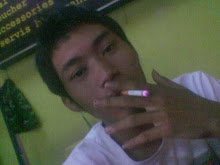SUN TZU ON THE ART OF WAR
THE OLDEST MILITARY TREATISE IN THE WORLD
孫子兵法
Translated from the Chinese
By LIONEL GILES, M.A. (1910)
V. ENERGY
1. Sun Tzu said: The control of a large force is the same principle as the control of a few men: it is merely a question of dividing up their numbers. 2. Fighting with a large army under your command is nowise different from fighting with a small one: it is merely a question of instituting signs and signals. 3. To ensure that your whole host may withstand the brunt of the enemy's attack and remain unshaken-- this is effected by maneuvers direct and indirect. 4. That the impact of your army may be like a grindstone dashed against an egg--this is effected by the science of weak points and strong. 5. In all fighting, the direct method may be used for joining battle, but indirect methods will be needed in order to secure victory. 6. Indirect tactics, efficiently applied, are inexhaustible as Heaven and Earth, unending as the flow of rivers and streams; like the sun and moon, they end but to begin anew; like the four seasons, they pass away to return once more. 7. There are not more than five musical notes, yet the combinations of these five give rise to more melodies than can ever be heard. 8. There are not more than five primary colors (blue, yellow, red, white, and black), yet in combination they produce more hues than can ever been seen. 9. There are not more than five cardinal tastes (sour, acrid, salt, sweet, bitter), yet combinations of them yield more flavors than can ever be tasted. 10. In battle, there are not more than two methods of attack--the direct and the indirect; yet these two in combination give rise to an endless series of maneuvers. 11. The direct and the indirect lead on to each other in turn. It is like moving in a circle--you never come to an end. Who can exhaust the possibilities of their combination? 12. The onset of troops is like the rush of a torrent which will even roll stones along in its course. 13. The quality of decision is like the well-timed swoop of a falcon which enables it to strike and destroy its victim. 14. Therefore the good fighter will be terrible in his onset, and prompt in his decision. 15. Energy may be likened to the bending of a crossbow; decision, to the releasing of a trigger. 16. Amid the turmoil and tumult of battle, there may be seeming disorder and yet no real disorder at all; amid confusion and chaos, your array may be without head or tail, yet it will be proof against defeat. 17. Simulated disorder postulates perfect discipline, simulated fear postulates courage; simulated weakness postulates strength. 18. Hiding order beneath the cloak of disorder is simply a question of subdivision; concealing courage under a show of timidity presupposes a fund of latent energy; masking strength with weakness is to be effected by tactical dispositions. 19. Thus one who is skillful at keeping the enemy on the move maintains deceitful appearances, according to which the enemy will act. He sacrifices something, that the enemy may snatch at it. 20. By holding out baits, he keeps him on the march; then with a body of picked men he lies in wait for him. 21. The clever combatant looks to the effect of combined energy, and does not require too much from individuals. Hence his ability to pick out the right men and utilize combined energy. 22. When he utilizes combined energy, his fighting men become as it were like unto rolling logs or stones. For it is the nature of a log or stone to remain motionless on level ground, and to move when on a slope; if four-cornered, to come to a standstill, but if round-shaped, to go rolling down. 23. Thus the energy developed by good fighting men is as the momentum of a round stone rolled down a mountain thousands of feet in height. So much on the subject of energy.







No comments:
Post a Comment